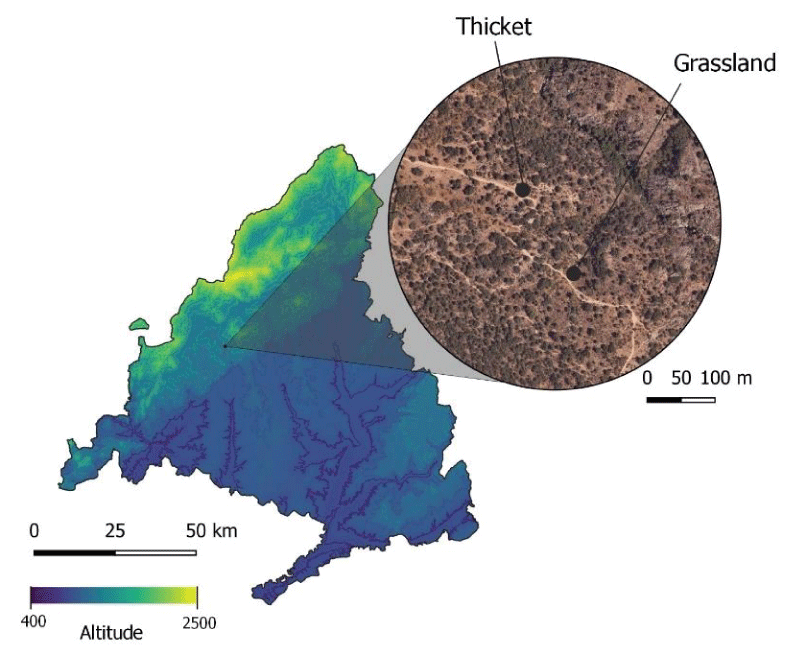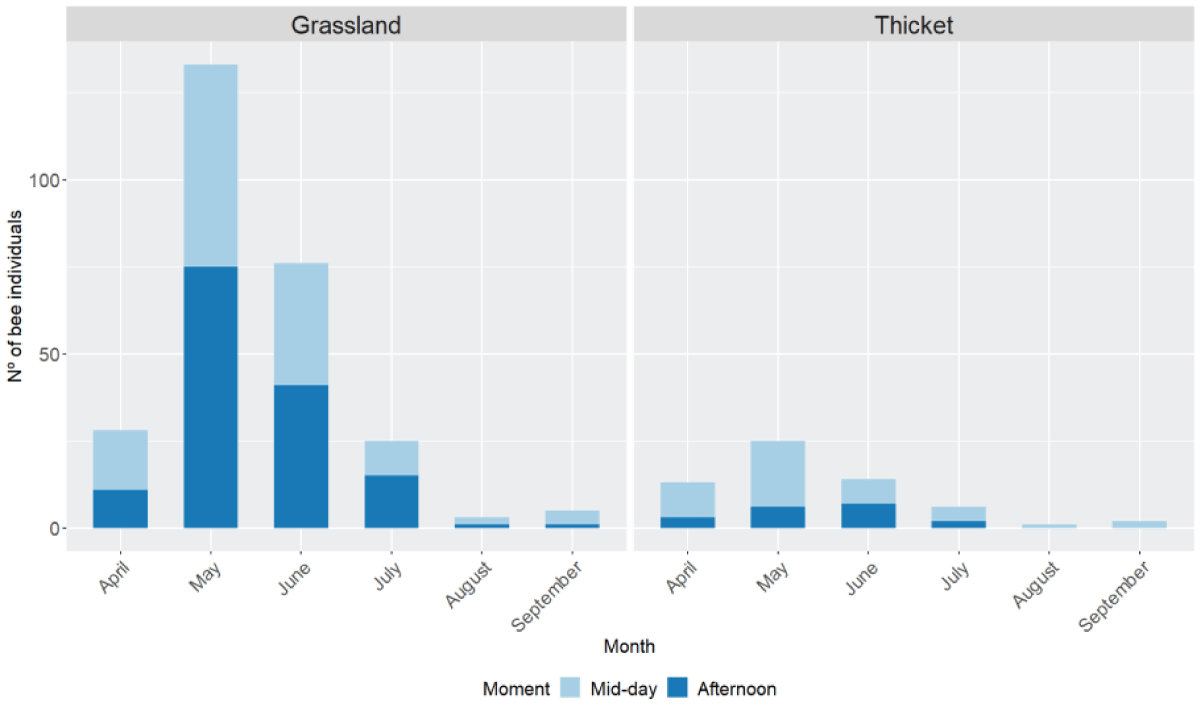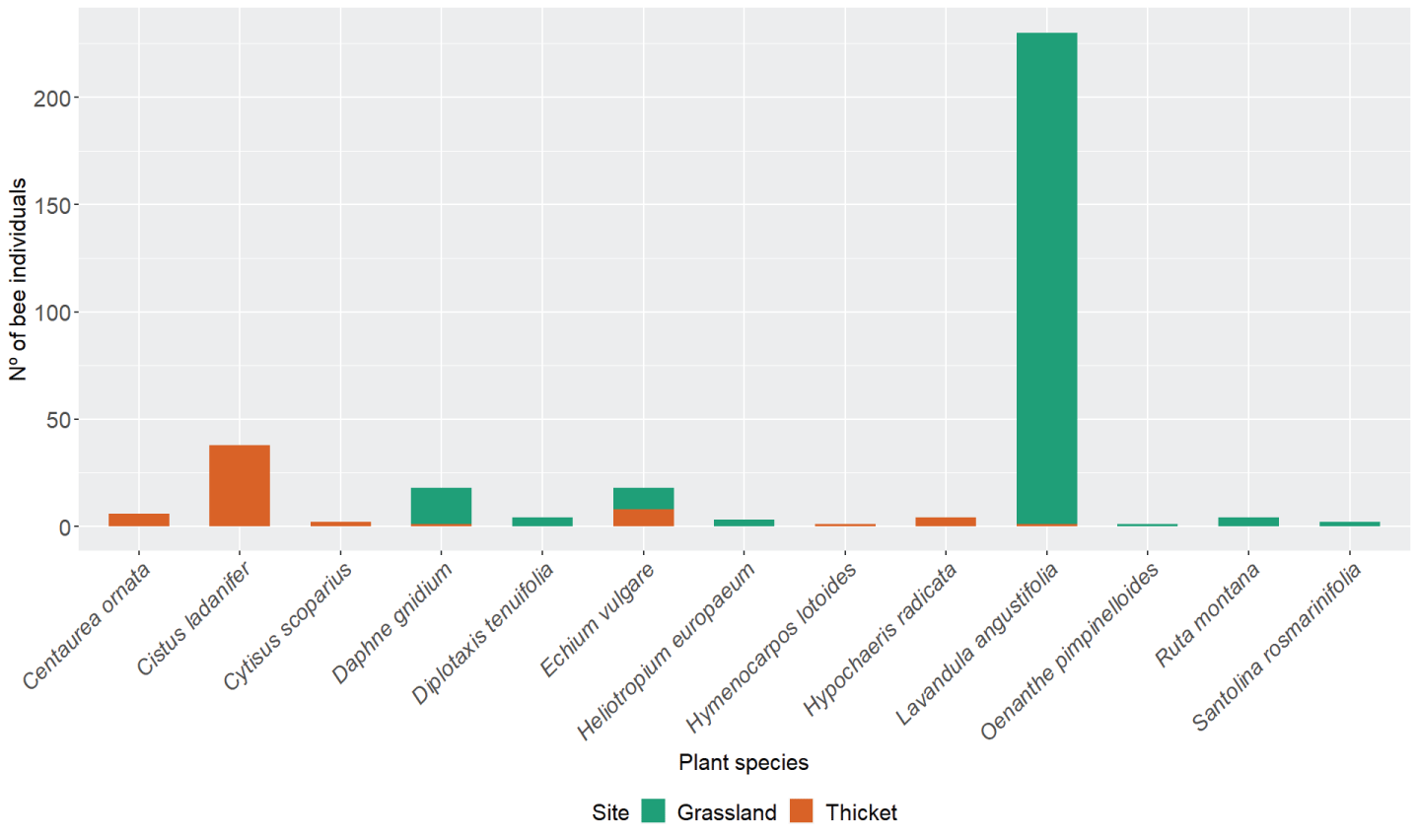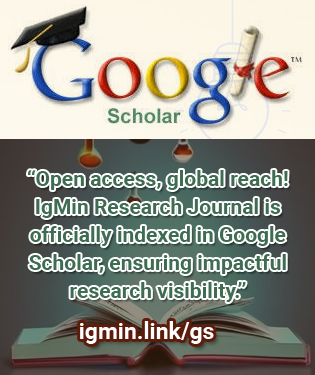要約
The plant-pollinator relationship is one of the most investigated biological processes, not only because of its ecological importance (natural and farming ecosystems) but also its economic profitability (farming and biological products). Current losses of bee populations urge the need to assess the state of wild bee biodiversity in environments such as the Sierra de Guadarrama. Two characteristic sites with different plant diversities were compared by collecting bees using net trapping, a thicket, and a grassland. In this way, not only the possible influence of floral wealth on bee abundance was studied, but also the preference of these Hymenoptera towards any type of flower. Phenological patterns and predominant sex were also studied. 331 bee individuals, belonging to 6 families, 19 genera, and 46 species, were recorded in this study. Our results showed that bee diversity depends not only on environmental factors (temperature or plant composition and abundance) but biological as well (plant-pollinators matches or co-occurring species). Moreover, our study sets a starting point for debating the influence of managed bees (Apis mellifera) on wild bee communities. A preference for a small number of plant species (Cistus ladanifer, Echium vulgare, and Lavandula stoechas) was observed. In addition, there was a relationship between the type of corolla and the tongue length. Our study highlights the importance of this area of the Sierra de Guadarrama for wild bee biodiversity. All things considered, it falls on preserving those ecosystems with high floral wealth to favor the wild bee´s presence and its habitat in the foresight of climate change future scenarios.









